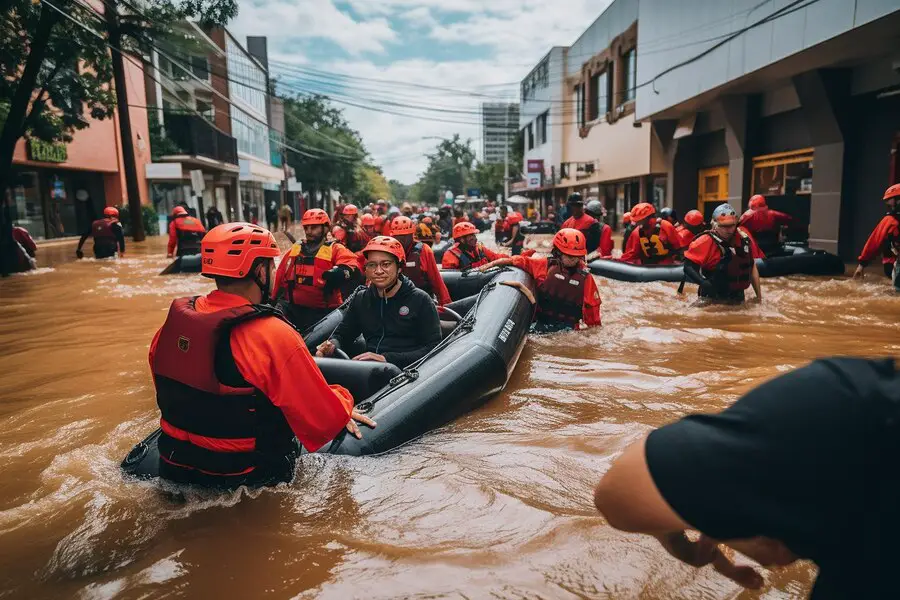Effective Emergency Plans: A Blueprint for National Disaster and Emergency Response

In a world that faces an increasing array of natural and man-made disasters, having effective emergency plans is not just a matter of prudence, but a necessity for safeguarding lives, infrastructure, and communities. National disaster and emergency response plans serve as a blueprint for coordinated actions aimed at mitigating the impacts of crises, ensuring swift and effective responses, and facilitating the recovery process. These plans encompass a wide range of scenarios, from natural calamities like hurricanes, earthquakes, and floods, to human-induced crises such as pandemics, terrorist attacks, and industrial accidents.


Page Contents
Understanding the Need
The importance of robust emergency plans cannot be overstated. They provide a structured framework for governments, emergency services, NGOs, and communities to collaborate seamlessly in times of crisis. By outlining clear roles, responsibilities, and procedures, these plans enable swift decision-making and resource allocation, minimizing confusion and maximizing efficiency in emergency situations.


The 6 Key Components

- Risk Assessment and Preparedness: Effective emergency plans begin with a comprehensive assessment of potential risks and vulnerabilities. This involves analyzing historical data, conducting risk mapping exercises, and engaging with experts to identify potential threats. Based on this assessment, preparedness measures such as early warning systems, evacuation routes, and stockpiling of essential supplies are put in place to enhance resilience.
- Communication and Coordination: Communication lies at the heart of any emergency response. National disaster plans establish communication protocols and channels to ensure seamless information flow among all stakeholders. This includes setting up dedicated hotlines, utilizing social media platforms for public alerts, and establishing coordination centers to facilitate collaboration between government agencies, first responders, and volunteer organizations.
- Resource Management: Adequate resource management is essential for an effective response. Emergency plans outline mechanisms for resource mobilization, including personnel, equipment, and financial resources. This may involve pre-established agreements with neighboring jurisdictions or international partners, as well as the deployment of specialized teams such as search and rescue units, medical personnel, and logistical support teams.
- Evacuation and Sheltering: In situations where evacuation is necessary, clear guidelines for evacuation procedures, sheltering arrangements, and transportation logistics are outlined in emergency plans. This includes identifying evacuation routes, establishing shelter locations, and coordinating mass evacuations with transportation authorities. Special attention is given to vulnerable populations such as the elderly, children, and individuals with disabilities to ensure their safety and well-being.
- Continuity of Operations: Maintaining essential services and functions during a crisis is critical for minimizing disruptions and facilitating recovery. National disaster plans incorporate measures to ensure the continuity of government operations, healthcare services, utilities, and essential businesses. This may involve establishing alternate facilities, implementing remote work arrangements, and prioritizing resource allocation based on critical needs.
- Recovery and Reconstruction: The aftermath of a disaster often requires long-term recovery and reconstruction efforts. Emergency plans outline strategies for assessing damage, prioritizing recovery efforts, and rebuilding infrastructure. This includes engaging with affected communities, providing financial assistance to individuals and businesses, and implementing measures to mitigate future risks.


Challenges and Opportunities
While national disaster plans are indispensable tools for emergency management, they also face several challenges. These include limited resources, bureaucratic hurdles, and the evolving nature of threats. However, advancements in technology, data analytics, and international cooperation present opportunities for enhancing the effectiveness of emergency plans. By leveraging innovative solutions such as artificial intelligence, predictive modeling, and community-based resilience initiatives, governments can strengthen their capacity to respond to emergencies proactively and mitigate risks effectively.
Conclusion
In an increasingly complex and interconnected world, the need for effective emergency plans on varying national disasters and distinct emergency response cannot be ignored. By investing in preparedness, communication, resource management, and recovery efforts, countries can enhance their resilience and protect their citizens from the devastating impacts of crises. As we confront the challenges of the 21st century, robust emergency planning remains a cornerstone of our collective efforts to build safer, more resilient communities.







